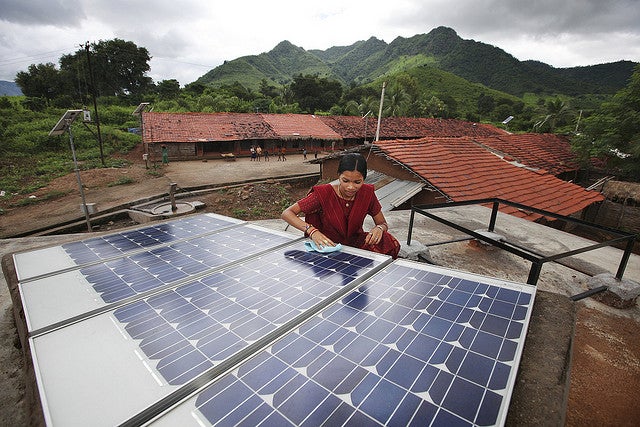
But perhaps one of the more interesting messages was the one coming from progressive regulators here in the U.S. The head of the California Public Utilities Commission, Michael Picker, noted that with renewable energy already supplying 40% of the state’s electricity a few days last year, the target for 50% renewables by 2030 is “not really a challenge”. Perhaps more interesting, he seemed very relaxed on reaching 100% renewables at some point in the future, on the back of strategic generation placement, transfers to neighboring states, and embedded storage. And note that we’re not talking about large hydropower here, which supplies between 6-12% of California’s electricity and is unlikely to increase*.
If a state in a country with one of the highest per capita rates of energy use in the world considers 100% renewably-sourced electricity feasible, then what does this mean for developing countries that are in the process of ramping up supply to expand access and support economic development? With solar and wind coming in at prices below new-build coal in South Africa (without accounting for any additional balancing costs, but also the environmental and social costs of coal), the old argument that fossil fuels are essential to expanding access to the poor is increasingly up for debate. Al Gore, in his keynote address at the Summit, forcefully made this point – which he repeated in an article published in the Guardian last week.
The idea of countries being able to source 100% of their electricity from predominantly non-hydro renewable energy, particularly those with large, unserved populations such as India, will be seen as a pipe dream to many. And yet, with the cost reductions now being seen, and increasing acknowledgement of the concept of a global carbon budget (and the resultant need to leave at least two thirds of already-discovered carbon reserves in the ground) the tide may be turning. Three challenges stand out from my perspective: i) Aggressively implementing energy efficiency and conservation measures to the point where the amount of energy required to support desired standards of living is dramatically reduced – modest improvements in energy intensity are not sufficient; ii) Investing in and deploying the technologies and infrastructure needed to support and manage more variable sources of electricity generation; and iii) Scaling-up the capacity of the clean energy sector to displace fossil fuel sources, most likely requiring even more impressive rates of growth than so-far seen.
The role of regulators and policy-makers in all this cannot be overstated. With so much disruptive innovation happening so quickly, it can be hard for established industries to adapt, often leading to protectionism and impediments to change. However, there is also an opportunity for countries to leapfrog from a 20 th Century model of electricity provision based on centralized grids run by regulated monopolies to something much more modular, distributed and resilient. This has already happened with mobile telephony, which has gone from nothing to ubiquity in less than two decades. But when the future is hard to predict, with potentially unknown solutions lying around the corner, how can leapfrogging be sensibly implemented by regulators that may be struggling just to respond to today’s challenges of insolvent utilities, supply shortfalls, and tariffs that do not reflect costs? This was the question that myself and other colleagues were left asking ourselves considering that the World Bank Group is heavily involved in utility reform and power sector planning.
We don’t have the answers, but it seems clear to me that if electricity from 100% renewables is no longer a pipe dream then we must support countries that want to leapfrog and embrace disruption so that the benefits of technological innovations and cost reductions reach those countries that need them the most.
*For further information on how California is successfully integrating increasing amounts of renewable energy into its electricity system, take a look at this article by Eric Martinot: How is California Integrating and Balancing Renewable Energy Today?


Join the Conversation